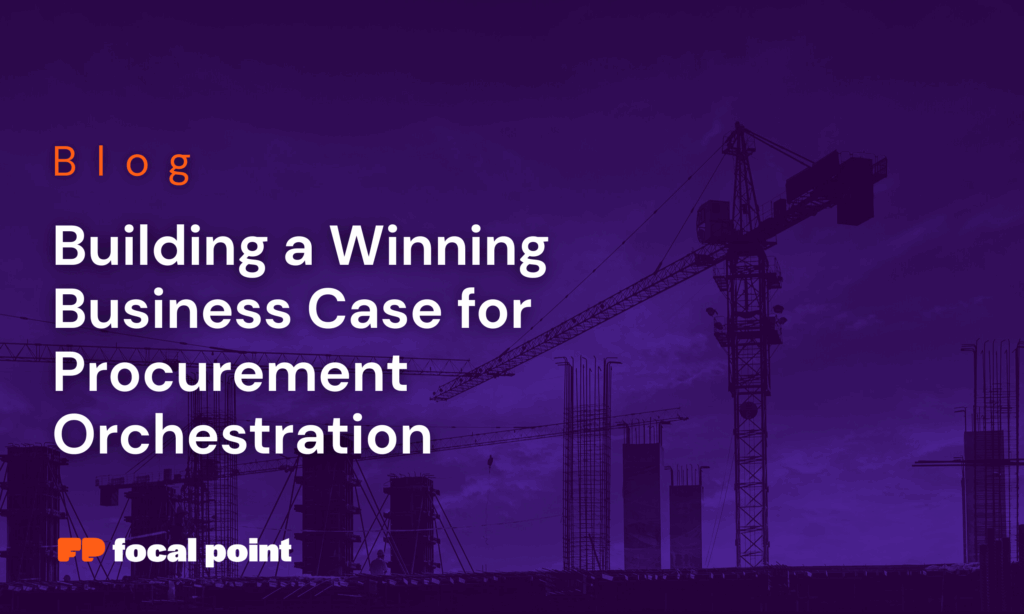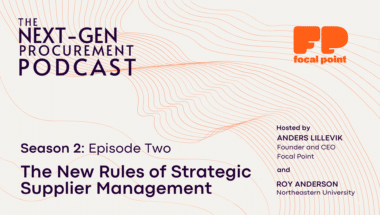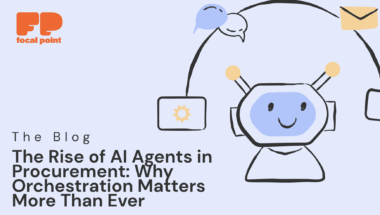Procurement leaders today face a familiar dilemma: you see the need for better process coordination, faster intake, and greater visibility, but articulating that value in a business case for procurement that drives cross-functional investment is a challenge.
Procurement process orchestration promises to transform how work flows across stakeholders, systems, and categories. But to get buy-in from finance, IT, operations, and other decision-makers, you need a business case that speaks their language, aligns with their objectives, and quantifies the outcomes that matter most to them.
Here’s how to build a compelling business case for procurement orchestration that earns executive support and sets you up for long-term impact.
Shift the Framing: Speaking C-Suite’s Language
One of the biggest missteps procurement teams make when introducing new solutions is leading with features and functions. Orchestration may sound revolutionary inside the function, but to a CFO, CIO, or COO, it’s most likely an unfamiliar concept. If you want traction, you need to anchor your case in outcomes they care about.
For finance, that’s control over unplanned spend, increased forecasting accuracy, and the ability to tie dollars to strategic intent. For IT, it’s fewer fire drills, stronger governance over tech purchases, and reduced integration headaches. For operations, it’s supplier reliability, faster issue resolution, and avoiding disruptions that ripple through production or service delivery.
The most effective business cases don’t just outline what procurement needs, they draw a direct line between orchestration and the broader business objectives of cost reduction, risk mitigation, operational efficiency, and stakeholder satisfaction.
Go Beyond Features: Quantify the Value
Building your case for procurement starts with structuring the value story. A strong business case balances both quantitative and qualitative returns, organized into three categories: cost reduction, time savings, and risk mitigation.
Cost reduction is typically the most persuasive lever. Orchestration enables better contract compliance, reduces maverick spend, and improves adherence to negotiated terms. If your organization is sitting at 58% compliance, and orchestration helps you reach 80%, that delta can translate into tens of millions in recurring savings, without changing what you buy, just how you buy it.
Time savings are often undervalued, but they’re powerful when redeployed strategically. Automation of intake, approvals, sourcing, and onboarding frees up time for procurement teams to tackle more complex categories, drive more RFPs, or provide greater internal support. Time saved is only compelling when tied to expanded value creation, so make that link clear.
Risk mitigation (particularly regulatory and reputational risk) is another critical benefit. By embedding compliance steps into workflows, PPO reduces the chance of noncompliant suppliers, missing documentation, or missed audits. In regulated industries, avoiding a bad audit report or eliminating “matter requiring attention” (MRA) flags from oversight agencies can be a business-critical outcome.
If you can show how orchestration prevents future risk, whether legal, operational, or financial, you’ve made a case that transcends procurement.
Don’t Underestimate Soft Benefits, Just Ground Them in Impact
Soft benefits often get left behind because they’re harder to quantify. But in many organizations, they’re the true drivers of adoption.
Improved user experience, for instance, can create a groundswell of internal support for procurement. When teams have clear, guided processes that are easy to follow, they’re more likely to comply, and more likely to return. Measuring procurement’s internal net promoter score (NPS) and tracking changes post-implementation can serve as a proxy for compliance, process adoption, and value perception.
Other strategic benefits include better stakeholder alignment, smoother collaboration across adjacent functions (like risk, legal, or finance), and a shift in procurement’s brand from tactical gatekeeper to strategic enabler. While these outcomes may not show up directly on the P&L, they contribute meaningfully to procurement’s influence and positioning across the enterprise.
To make these softer wins land, tie them to tangible metrics: user satisfaction, contract adherence, time to value, or reduction in escalations.
Show your Work: A Model for Quantifying ROI in a Business Case for Procurement
Let’s walk through an example. Say you’re supporting a $4.2B organization with 58% of spend currently under contract. That means $1.76B in spend is flowing through noncompliant channels.
Assuming a conservative 5% premium on off-contract purchases, that’s ~$88M in potential annual value leakage. By implementing PPO and improving compliance by even 22 percentage points, you recapture ~$45M in savings, more than enough to fund your technology investment, including licensing and implementation.
This kind of model is simple but powerful. It demonstrates how orchestration unlocks ROI by fixing process inefficiencies, not by slashing budgets or resources.
Start Smart: Prioritizing Quick Wins
Once you’ve got the green light, deployment becomes your proof point. The most successful teams start small, move fast, and expand from there.
Rather than over-engineering every possible use case up front, focus on a pain point that affects a wide user base, like intake or supplier onboarding. Implement a process that’s visible, repeatable, and delivers immediate time-to-value. Then use that momentum to extend orchestration into sourcing, category planning, or compliance workflows.
Some organizations start with a single business unit or spend category. Others roll out one universal process (e.g., intake) with conditional logic that flexes based on request type. What matters most is sequencing, get something working, prove the impact, and then scale.
Orchestration isn’t a one-and-done project. It’s a long-term capability that grows with your team. The best plans balance agility with ambition.
Sustaining (and Growing) Your ROI
Orchestration is unique in that its value compounds over time. As teams grow more comfortable with the platform, they begin to find new use cases across procurement and beyond. Processes that once lived in SharePoint or email get systematized. Legacy tools get retired. Adoption drives standardization, and standardization drives efficiency.
That ongoing innovation is what sustains your ROI. Successful teams don’t stop at Phase 1, they continuously evolve the way they work. And with modern platforms that don’t penalize you for scaling (no extra fees for users or processes), every new use case becomes a value multiplier.
Final Takeaway: The Business Case for Procurement Is a Story
At the end of the day, a great business case tells a compelling story: this is the pain we face today, this is the future we can build, and this is how we’ll get there.
It’s not about perfect processes or abstract potential. It’s about framing orchestration as the tool to unlock better outcomes, for the business, for your stakeholders, and for your team.
When you align your narrative with executive priorities, quantify your case with real-world benchmarks, and design a path that starts delivering fast, you’re ultimately making the case for a better way to work.
Ready to delve in and learn more about building an effective business case for procurement orchestration?
Download our latest whitepaper to get a step-by-step guide, real examples, and talk tracks tailored for your executive audience.



